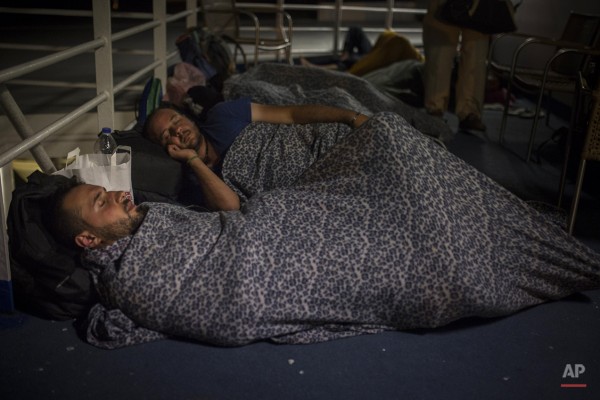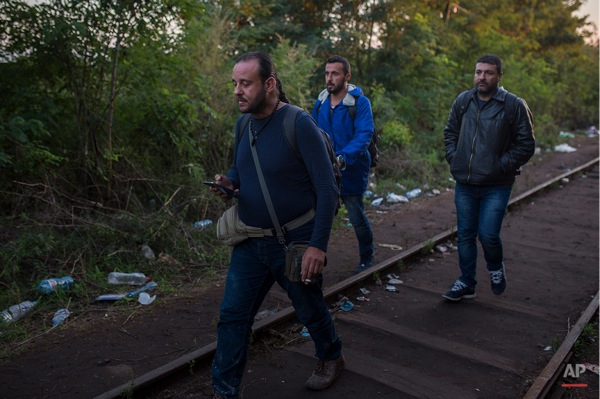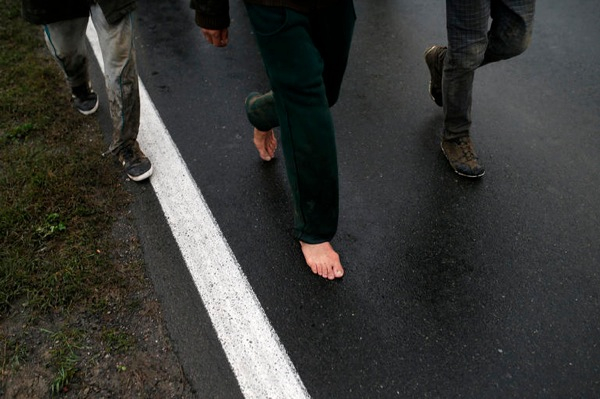Notes
Country and Class and How We Look at the Migrant Crisis
We have seen plenty of imagery about the migrant crisis in Europe beginning and ending with a boat reaching shore. More and more so, we have also seen stories tracking immigrants from that boat – or even before that, from home – all the way to their final destination weeks or months later, in Germany, say, or Sweden.
This photo story from AP’s website, “Mohammed’s Journey: A Syrian’s Long Quest For a Normal Life,” by AP photographers Santi Palacios and Manu Brabo, mostly shot by Palacios, is one of the latter. What’s also distinct about it, though, is what it suggests about class, and the media consumer’s assumptions. As the public is inundated by photo stories, magazine covers and news photo galleries of the migrant exodus, certainly we’ve read how refugees coming from different places have different backgrounds and means. At the same time, however, there is a real risk in visually equating people in flight or in difficult circumstances as poor and needy, especially if the photos focus on their subjugation and dehumanization.
The central figure in the AP photo story is Mohammed al-Haj. Above left, we see him on a the deck of a ferry traveling from Lesbos to Athens. If we just read the caption quickly, what stands out is that:
Mohammed al-Haj, foreground, and his friend Dr. Mohanad Abdul-Qader, also from Syria, sleep on the deck of a ferry in this photo taken on Wednesday, Sept. 9, 2015, as they travel from Lesbos to Athens. Ferry officials barred the refugees from entering the lounges on the lower decks, where tourists and Greeks stretched out on comfortable seats. Instead, the migrants were told to cram on the eighth level, but when the smell there became too much, Mohammed and others slept on the open-air deck, exposed to the cold night breeze and the rain. “Of course, this is a kind of racism. They look at us Syrians as animals,” Mohammed said.
A former employee of the Dar al-Shifaa hospital in his home town of Aleppo, the facility closed under the crushing weight and carnage of the war.
In the photo below, we see him walking along a railroad track attempting to cross from Serbia into Hungary, just before he and his compatriots are chased into a cornfield by Hungarian police. The man on the left is the same friend next to Mohammed on the ferry.
I’m just wondering: did you notice Mohammed’s friend’s title in the first line of the caption I quoted above. (If you did, more power to you, noting how quickly people attend to captions if they read them at all.)
I’m also wondering, if you had seen this photo of Mohammed and his compatriots forging north along a rail line with everything they had, here eight days into their journey and pressing to get out of Serbia, and the photo simply illustrated a general news story, not an in-depth photo feature on Mohammed’s odyssey, how much would you have assumed that his fellow travelers in this second photo were doctors?
And even knowing that, I’m wondering how many western news consumers would still look at the Syrians professionally, Dr. Mohanad Abdul-Qader, left, and Dr. Ahmed Naasan, right, with an asterisk?
(updated with new photo – 9:12 am)
(photos: Santi Palacios/AP. second caption: In this Saturday, Sept. 12, 2015 photo, Mohammed al-Haj, center, with his friends Dr. Mohanad Abdul-Qader, left, and Dr. Ahmed Naasan try to pass from the Serbian village of Horgos to Hungary.)




Reactions
Comments Powered by Disqus